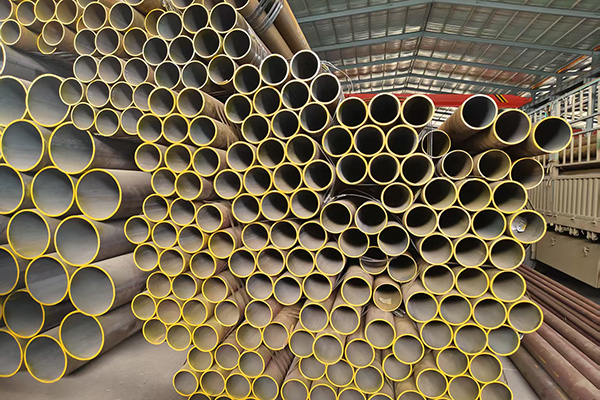

High Pressure Boiler Seamless Pipe: Manufacturing Processes and Their Impact on Quality
High pressure boiler seamless pipes are critical components in power plants and industrial boilers where they operate under extreme pressure and temperature conditions. The manufacturing processes of these pipes directly influence their mechanical properties, structural integrity, and service life.
Manufacturing Processes
Billet Preparation
The process begins with the selection and preparation of high-quality steel billets. Chemical composition and cleanliness are strictly controlled to ensure consistent mechanical properties and minimize defects.
Heating and Piercing
Billets are heated uniformly to achieve plasticity suitable for hot working. The heated billet undergoes piercing using a rotary or plug mill to create a hollow shell, forming the basic pipe shape. Precise control during piercing is essential to avoid eccentricity and internal defects.
Hot Rolling and Sizing
The hollow shell is further hot rolled or stretched to the desired diameter and wall thickness. Sizing mills provide dimensional accuracy and smooth surface finish. This stage refines the pipe's microstructure and improves mechanical properties.
Heat Treatment
Post-rolling heat treatments, such as normalizing and tempering, are performed to relieve residual stresses, refine grain size, and enhance toughness and ductility. For high-pressure boiler pipes, strict adherence to heat treatment parameters is vital to meet creep resistance and fatigue life requirements.
Straightening and Cutting
Pipes are straightened and cut to specified lengths with attention to maintaining dimensional tolerances and avoiding surface damage.
Surface Treatment and Inspection
Pickling removes scale and impurities, and non-destructive testing (ultrasonic, radiographic, and hydrostatic testing) ensures pipe integrity. Surface finishing methods prevent corrosion and prepare pipes for service.
Impact on Quality
Mechanical Properties
Uniform heating and controlled rolling processes ensure consistent tensile strength, yield strength, and impact toughness, essential for withstanding high pressure and temperature.
Dimensional Accuracy
Precise sizing and straightening reduce ovality and waviness, ensuring reliable pipe fitting and stress distribution in boiler systems.
Microstructural Integrity
Controlled heat treatment produces a refined grain structure and avoids brittle phases that could lead to premature failure.
Defect Minimization
Proper piercing and rolling techniques reduce internal defects such as inclusions, voids, or laps, which are potential failure initiation sites.
Corrosion Resistance
Surface treatments and coatings improve resistance to oxidation and corrosion under boiler operating conditions.
Conclusion
The manufacturing process of high pressure boiler seamless pipes profoundly affects their performance and safety in demanding environments. Strict control over each stage, from billet selection to final inspection, ensures pipes meet rigorous standards and operate reliably throughout their service life.
References:
ASTM A192 – Standard Specification for Seamless Carbon Steel Boiler Tubes
ASME Boiler and Pressure Vessel Code Section II – Materials
Totten, G. E. (2006). Steel Heat Treatment: Metallurgy and Technologies.
Zhang, Y., & Wang, L. (2018). “Influence of Manufacturing Processes on the Properties of Boiler Seamless Pipes.” Journal of Materials Engineering and Performance, 27(9), 4532–4540.





